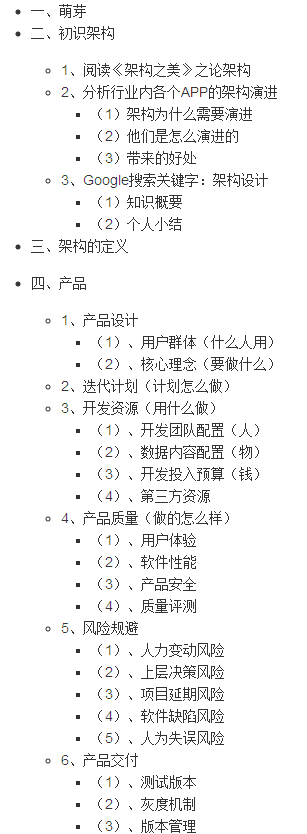i am new to ios. I need to know the current view controller from app delegate.. i have no idea about this and i don't knowto implement this. i am using this code toimplemnt this but it return null values. I followed this link- Get current view controller from the app delegate (modal is possible) need help.
问题:
回答1:
This is what I use for finding the current view controller that the user is most likely interacting with:
UIViewController+Utils.h
#import <UIKit/UIKit.h>
@interface UIViewController (Utils)
+(UIViewController*) currentViewController;
@end
UIViewController+Utils.m
#import "UIViewController+Utils.h"
@implementation UIViewController (Utils)
+(UIViewController*) findBestViewController:(UIViewController*)vc {
if (vc.presentedViewController) {
// Return presented view controller
return [UIViewController findBestViewController:vc.presentedViewController];
} else if ([vc isKindOfClass:[UISplitViewController class]]) {
// Return right hand side
UISplitViewController* svc = (UISplitViewController*) vc;
if (svc.viewControllers.count > 0)
return [UIViewController findBestViewController:svc.viewControllers.lastObject];
else
return vc;
} else if ([vc isKindOfClass:[UINavigationController class]]) {
// Return top view
UINavigationController* svc = (UINavigationController*) vc;
if (svc.viewControllers.count > 0)
return [UIViewController findBestViewController:svc.topViewController];
else
return vc;
} else if ([vc isKindOfClass:[UITabBarController class]]) {
// Return visible view
UITabBarController* svc = (UITabBarController*) vc;
if (svc.viewControllers.count > 0)
return [UIViewController findBestViewController:svc.selectedViewController];
else
return vc;
} else {
// Unknown view controller type, return last child view controller
return vc;
}
}
+(UIViewController*) currentViewController {
// Find best view controller
UIViewController* viewController = [UIApplication sharedApplication].keyWindow.rootViewController;
return [UIViewController findBestViewController:viewController];
}
@end
Then whenever I need the current view controller from anywhere in the app simply use:
[UIViewController currentViewController]
回答2:
Here're some class/static functions in swift that I keep in a Utility class and can help you:
// Returns the most recently presented UIViewController (visible)
class func getCurrentViewController() -> UIViewController? {
// If the root view is a navigation controller, we can just return the visible ViewController
if let navigationController = getNavigationController() {
return navigationController.visibleViewController
}
// Otherwise, we must get the root UIViewController and iterate through presented views
if let rootController = UIApplication.sharedApplication().keyWindow?.rootViewController {
var currentController: UIViewController! = rootController
// Each ViewController keeps track of the view it has presented, so we
// can move from the head to the tail, which will always be the current view
while( currentController.presentedViewController != nil ) {
currentController = currentController.presentedViewController
}
return currentController
}
return nil
}
// Returns the navigation controller if it exists
class func getNavigationController() -> UINavigationController? {
if let navigationController = UIApplication.sharedApplication().keyWindow?.rootViewController {
return navigationController as? UINavigationController
}
return nil
}
回答3:
This helped me to find the visible view controller. I searched for existing methods and didn't find any. So I wrote my own custom one.
-(id)getCurrentViewController
{
id WindowRootVC = [[[[UIApplication sharedApplication] delegate] window] rootViewController];
id currentViewController = [self findTopViewController:WindowRootVC];
return currentViewController;
}
-(id)findTopViewController:(id)inController
{
/* if ur using any Customs classes, do like this.
* Here SlideNavigationController is a subclass of UINavigationController.
* And ensure you check the custom classes before native controllers , if u have any in your hierarchy.
if ([inController isKindOfClass:[SlideNavigationController class]])
{
return [self findTopViewController:[inController visibleViewController]];
}
else */
if ([inController isKindOfClass:[UITabBarController class]])
{
return [self findTopViewController:[inController selectedViewController]];
}
else if ([inController isKindOfClass:[UINavigationController class]])
{
return [self findTopViewController:[inController visibleViewController]];
}
else if ([inController isKindOfClass:[UIViewController class]])
{
return inController;
}
else
{
NSLog(@"Unhandled ViewController class : %@",inController);
return nil;
}
}
And sample use :
-(void)someMethod
{
id currentVC = [self getCurrentViewController];
if (currentVC)
{
NSLog(@"currentVC :%@",currentVC);
}
}
回答4:
It depends on how you set up your UI. You can possibly get your rootViewController and move through the hierarchy if it is set up in such a way.
UIViewController *vc = self.window.rootViewController;
回答5:
UIViewController* actualVC = [anyViewController.navigationController.viewControllers lastObject];
回答6:
I get the root controller and then iterate through presented VC's:
UIViewController *current = [UIApplication sharedApplication].keyWindow.rootViewController;
while (current.presentedViewController) {
current = current.presentedViewController;
}
//now you can use current, for example to present an alert view controller:
[current presentViewController:alert animated:YES completion:nil];
回答7:
Swift version of jjv360's great answer, (I got rid of some redundant returns, and I think Swift is more readable)
func getCurrentViewController(_ vc: UIViewController) -> UIViewController? {
if let pvc = vc.presentedViewController {
return getCurrentViewController(pvc)
}
else if let svc = vc as? UISplitViewController, svc.viewControllers.count > 0 {
return getCurrentViewController(svc.viewControllers.last!)
}
else if let nc = vc as? UINavigationController, nc.viewControllers.count > 0 {
return getCurrentViewController(nc.topViewController!)
}
else if let tbc = vc as? UITabBarController {
if let svc = tbc.selectedViewController {
return getCurrentViewController(svc)
}
}
return vc
}
From you AppDelegate,
guard let rvc = self.window?.rootViewController else {
return
}
if let vc = getCurrentViewController(rvc) {
// do your stuff here
}
回答8:
|*| Get Visible View Controller from Navigation View Controller
let NavVccVar = UIApplication.sharedApplication().keyWindow?.rootViewController as! UINavigationController
let ShnSrnVar = NavVccVar.visibleViewController
|*| Presenting from the Visible View Controller
let NavVccVar = UIApplication.sharedApplication().keyWindow?.rootViewController as! UINavigationController
NavVccVar.visibleViewController!.presentViewController(NamVccVar, animated: true, completion: nil)
回答9:
This is the best solution that I have tried out yet
+ (UIViewController*) topMostController
{
UIViewController *topController = [UIApplication sharedApplication].keyWindow.rootViewController;
while (topController.presentedViewController) {
topController = topController.presentedViewController;
}
return topController;
}
回答10:
i am using this code-
//in AppDelegate:
@interface AppDelegate()
{
id lastViewController;
}
@implementation AppDelegate
-(BOOL)application:(UIApplication *)application didFinishLaunchingWithOptions:
(NSDictionary *)launchOptions
{
[[NSNotificationCenter defaultCenter] addObserver:self selector:@selector(handleCurrentViewController) name:@"CurrentViewController" object:nil];
}
-(void)handleCurrentViewController:(NSNotification *)notification
{
if([[notification userInfo] objectForKey:@"lastViewController"])
{
lastViewController = [[notification userInfo] objectForKey:@"lastViewController"];
}
}
-(void)applicationDidEnterBackground:(UIApplication *)application
{
NSLog(@"last view controller is %@", [(UIViewController *)lastViewController class]);
}
@end
//in every ViewController you want to detect
@implementation SomeViewController
-(void) viewWillDisappear:(BOOL)animated
{
[super viewWillDisappear:animated];
[[NSNotificationCenter defaultCenter] postNotificationName:@"CurrentViewController" object:nil userInfo:[NSDictionary dictionaryWithObjectsAndKeys:self, @"lastViewController", nil]];
}
回答11:
I found this and it works great for me for all types of segues and view controllers. It's very simple and short too which is nice.
+(UIViewController*) getTopController{ UIViewController *topViewController = [UIApplication sharedApplication].keyWindow.rootViewController;
while (topViewController.presentedViewController) { topViewController = topViewController.presentedViewController; } return topViewController; }
回答12:
Swift 4.0 Global Alert function:-
1.Make A Separate Util .swift class and give name FCommonUtils.swift :-
import Foundation
import SystemConfiguration
class FCommonUtils{
class func alert(title:String = appName, message:String) -> Void {
//make alert controller
let alert = UIAlertController(title: title,message: message,preferredStyle: UIAlertControllerStyle.alert)
//add okay button
alert.addAction(UIAlertAction.init(title: "Okay",style: .default,handler: { (action) in }))
//present it on controller
if let vc = UIApplication.shared.keyWindow?.rootViewController{
vc.present(alert, animated: true, completion: nil)
}
}
}
2. Use it anywhere like this in side view controllers or from UI Objects :-
FCommonUtils.alert(message: "Test Message")
This is the simple and easiest way to implement global alert feature inside iOS Apps. Happy Coding!! ;)



